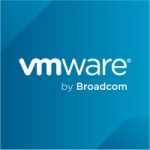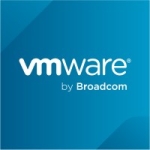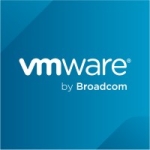PART I
In case you missed it, there were some public cloud outages during the recent Christmas 2012-holiday season. One incident involved Microsoft Xbox (view the Microsoft Azure status dashboard here) users were impacted, and the other was another Amazon Web Services (AWS) incident. Microsoft and AWS are not alone, most if not all cloud services have had some type of incident and have gone on to improve from those outages. Google has had issues with different applications and services including some in December 2012 along with a Gmail incident that received covered back in 2011.
For those interested, here is a link to the AWS status dashboard and a link to the AWS December 24 2012 incident postmortem. In the case of the recent AWS incident which affected users such as Netflix, the incident (read the AWS postmortem and Netflix postmortem) was tied to a human error. This is not to say AWS has more outages or incidents vs. others including Microsoft, it just seems that we hear more about AWS when things happen compared to others. That could be due to AWS size and arguably market leading status, diversity of services and scale at which some of their clients are using them.
Btw, if you were not aware, Microsoft Azure is more than just about supporting SQLserver, Exchange, SharePoint or Office, it is also an IaaS layer for running virtual machines such as Hyper-V, as well as a storage target for storing data. You can use Microsoft Azure storage services as a target for backing up or archiving or as general storage, similar to using AWS S3 or Rackspace Cloud files or other services. Some backup and archiving AaaS and SaaS providers including Evault partner with Microsoft Azure as a storage repository target.
When reading some of the coverage of these recent cloud incidents, I am not sure if I am more amazed by some of the marketing cloud washing, or the cloud bashing and uniformed reporting or lack of research and insight. Then again, if someone repeats a myth often enough for others to hear and repeat, as it gets amplified, the myth may assume status of reality. After all, you may know the expression that if it is on the internet then it must be true?
Have AWS and public cloud services become a lightning rod for when things go wrong?
Here is some coverage of various cloud incidents:
Huffington post coverage of February 2011 Google Gmail incident
Microsoft Azure coverage by Allthingsd.com
Neowin.net covering Microsoft Xbox incident
Google’s Gmail blog coverage of Gmail outage
Forbes article Amazon AWS Takes Down Netflix on Christmas Eve
Over at Performance Critical Apps they assert the AWS incident was Netflix fault
From The Virtualization Practice: Amazon Ruining Public Cloud Computing?
Here is Netflix architect Adrian Cockcroft discussing the recent incident
From StorageIOblog Amazon Web Services (AWS) and the Netflix Fix?
From CRN, here are some cloud service availability status via Nasuni
The above are a small sampling of different stories, articles, columns, blogs, perspectives about cloud services outages or other incidents. Assuming the services are available, you can Google or Bing many others along with reading postmortems to gain insight into what happened, the cause, effect and how to prevent in the future.
Do these recent incidents show a trend of increased cloud outages? Alternatively, do they say that the cloud services are being used more and on a larger basis, thus the impacts become more known?
Perhaps it is a mix of the above, and like when a magnetic storage tape gets lost or stolen, it makes for good news or copy, something to write about. Granted there are fewer tapes actually lost than in the past, and far fewer vs. lost or stolen laptops and other devices with data on them. There are probably other reasons such as the lightning rod effect given how much industry hype around clouds that when something does happen, the cynics or foes come out in force, sometimes with FUD.
Similar to traditional hardware or software based product vendors, some service providers have even tried to convince me that they have never had an incident, lost or corrupted or compromised any data, yeah, right. Candidly, I put more credibility and confidence in a vendor or solution provider who tells me that they have had incidents and taken steps to prevent them from recurring. Granted those steps might be made public while others might be under NDA, at least they are learning and implementing improvements.
As part of gaining insights, here are some links to AWS, Google, Microsoft Azure and other service status dashboards where you can view current and past situations.
AWS service status dashboard
Bluehost server status dashboard
Google App status dashboard
HP cloud service status console (requires login)
Microsoft Azure service status dashboard
Microsoft Xbox service status dashboard
Rackspace service status dashboards
PART II
There is good information, insight and lessons to be learned from cloud outages and other incidents.
Sorry cynics no that does not mean an end to clouds, as they are here to stay. However when and where to use them, along with what best practices, how to be ready and configure for use are part of the discussion. This means that clouds may not be for everybody or all applications, or at least today. For those who are into clouds for the long haul (either all in or partially) including current skeptics, there are many lessons to be learned and leveraged.
In order to gain confidence in clouds, some questions that I routinely am asked include are clouds more or less reliable than what you are doing? Depends on what you are doing, and how you will be using the cloud services. If you are applying HA and other BC or resiliency best practices, you may be able to configure and isolate from the more common situations. On the other hand, if you are simply using the cloud services as a low-cost alternative selecting the lowest price and service class (SLAs and SLOs), you might get what you paid for. Thus, clouds are a shared responsibility, the service provider has things they need to do, and the user or person designing how the service will be used have some decisions making responsibilities.
Keep in mind that high availability (HA), resiliency, business continuance (BC) along with disaster recovery (DR) are the sum of several pieces. This includes people, best practices, processes including change management, good design eliminating points of failure and isolating or containing faults, along with how the components or technology used (e.g. hardware, software, networks, services, tools). Good technology used in goods ways can be part of a highly resilient flexible and scalable data infrastructure. Good technology used in the wrong ways may not leverage the solutions to their full potential.
While it is easy to focus on the physical technologies (servers, storage, networks, software, facilities), many of the cloud services incidents or outages have involved people, process and best practices so those need to be considered.
These incidents or outages bring awareness, a level set, that this is still early in the cloud evolution lifecycle and to move beyond seeing clouds as just a way to cut cost, and seeing the importance and value HA, resiliency, BC and DR. This means learning from mistakes, taking action to correct or fix errors, find and cut points of failure are part of a technology maturing or the use of it. These all tie into having services with service level agreements (SLAs) with service level objectives (SLOs) for availability, reliability, durability, accessibility, performance and security among others to protect against mayhem or other things that can and do happen.
The reason I mentioned earlier that AWS had another incident is that like their peers or competitors who have incidents in the past, AWS appears to be going through some growing, maturing, evolution related activities. During summer 2012 there was an AWS incident that affected Netflix (read more here: AWS and the Netflix Fix?). It should also be noted that there were earlier AWS outages where Netflix (read about Netflix architecture here) leveraged resiliency designs to try and prevent mayhem when others were impacted.
Is AWS a lightning rod for things to happen, a point of attraction for Mayhem and others?
Granted given their size, scope of services and how being used on a global basis AWS is blazing new territory and experiences, similar to what other information services delivery platforms did in the past. What I mean is that while taken for granted today, open systems Unix, Linux, Windows-based along with client-server, midrange or distributed systems, not to mention mainframe hardware, software, networks, processes, procedures, best practices all went through growing pains.
There are a couple of interesting threads going on over in various LinkedIn Groups based on some reporters stories including on speculation of what happened, followed with some good discussions of what actually happened and how to prevent recurrence of them in the future.
Over in the Cloud Computing, SaaS & Virtualization group forum, this thread is based on a Forbes article (Amazon AWS Takes Down Netflix on Christmas Eve) and involves conversations about SLAs, best practices, HA and related themes. Have a look at the story the thread is based on and some of the assertions being made, and ensuing discussions.
Also over at LinkedIn, in the Cloud Hosting & Service Providers group forum, this thread is based on a story titled Why Netflix’ Christmas Eve Crash Was Its Own Fault with a good discussion on clouds, HA, BC, DR, resiliency and related themes.
Over at the Virtualization Practice, there is a piece titled Is Amazon Ruining Public Cloud Computing? with comments from me and Adrian Cockcroft (@Adrianco) a Netflix Architect (you can read his blog here). You can also view some presentations about the Netflix architecture here.
What this all means
Saying you get what you pay for would be too easy and perhaps not applicable.
There are good services free, or low-cost, just like good free content and other things, however vice versa, just because something costs more, does not make it better.
Otoh, there are services that charge a premium however may have no better if not worse reliability, same with content for fee or perceived value that is no better than what you get free.
Additional related material
Cloud conversations: confidence, certainty and confidentiality
Only you can prevent cloud data loss (shared responsibility)
The blame game: Does cloud storage result in data loss?
Amazon Web Services (AWS) and the Netflix Fix?
Cloud conversations: AWS Government Cloud (GovCloud)
Everything Is Not Equal in the Data center
Cloud and Virtual Data Storage Networking (CRC) – Intel Recommended Reading List
Some closing thoughts:
Clouds are real and can be used safely; however, they are a shared responsibility.
Only you can prevent cloud data loss, which means do your homework, be ready.
If something can go wrong, it probably will, particularly if humans are involved.
Prepare for the unexpected and clarify assumptions vs. realities of service capabilities.
Leverage fault isolation and containment to prevent rolling or spreading disasters.
Look at cloud services beyond lowest cost or for cost avoidance.
What is your organizations culture for learning from mistakes vs. fixing blame?
Ask yourself if you, your applications and organization are ready for clouds.
Ask your cloud providers if they are ready for you and your applications.
Identify what your cloud concerns are to decide what can be done about them.
Do a proof of concept to decide what types of clouds and services are best for you.
Do not be scared of clouds, however be ready, do your homework, learn from the mistakes, misfortune and errors of others. Establish and leverage known best practices while creating new ones. Look at the past for guidance to the future, however avoid clinging to, and bringing the baggage of the past to the future. Use new technologies, tools and techniques in new ways vs. using them in old ways.
Disclosure: I am a customer of AWS for EC2, EBS, S3 and Glacier as well as a customer of Bluehost for hosting and Rackspace for backups. Other than Amazon being a seller of my books (and my blog via Kindle) along with running ads on my sites and being an Amazon Associates member (Google also has ads), none of those mentioned are or have been StorageIO clients.
[To view all of the links mentioned in this post, go to:
http://storageioblog.com/cloud-conversations-gaining-cloud-confidence-from-insights-into-aws-outages/ ]
Some updates:
http://storageioblog.com/november-2013-server-storageio-update-newsletter/
http://storageioblog.com/fall-2013-aws-cloud-storage-compute-enhancements/


















Wow, Aimee, it's great to know you have a 'no complaint' sentiment about AWS!
Given that you had originally spent what sounds like a large amount of time dealing with customer service, how did they succeed in delivering you to a place where you have 'no complaints' about the platform?